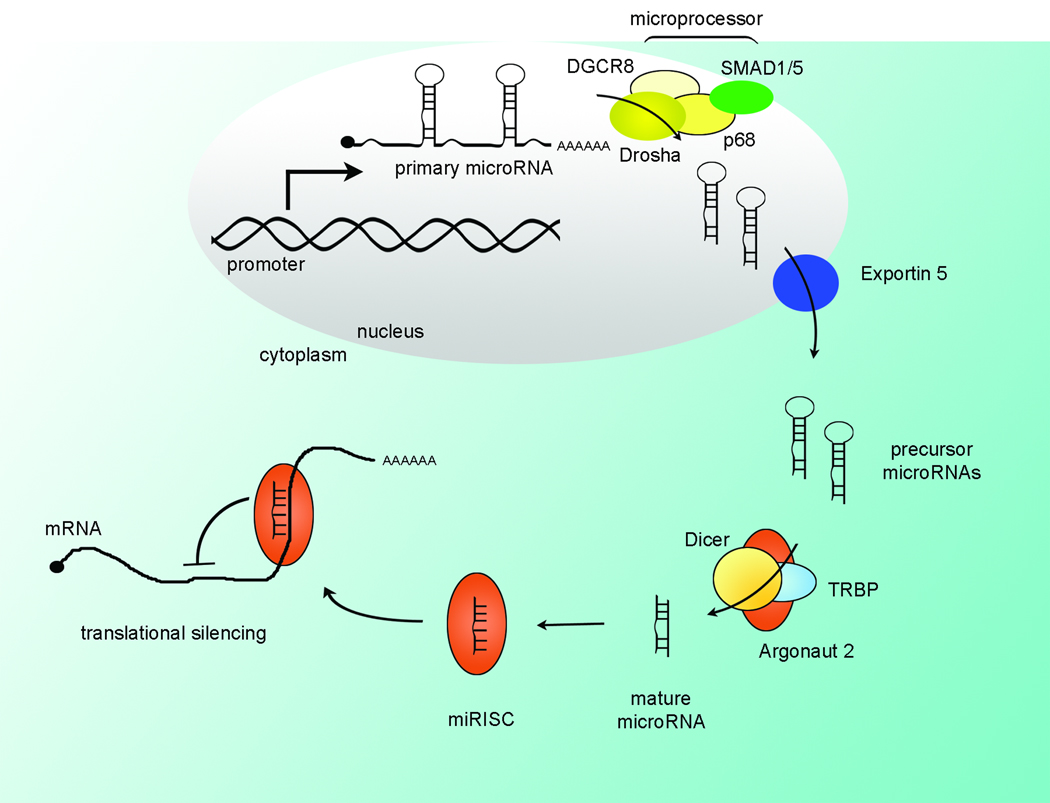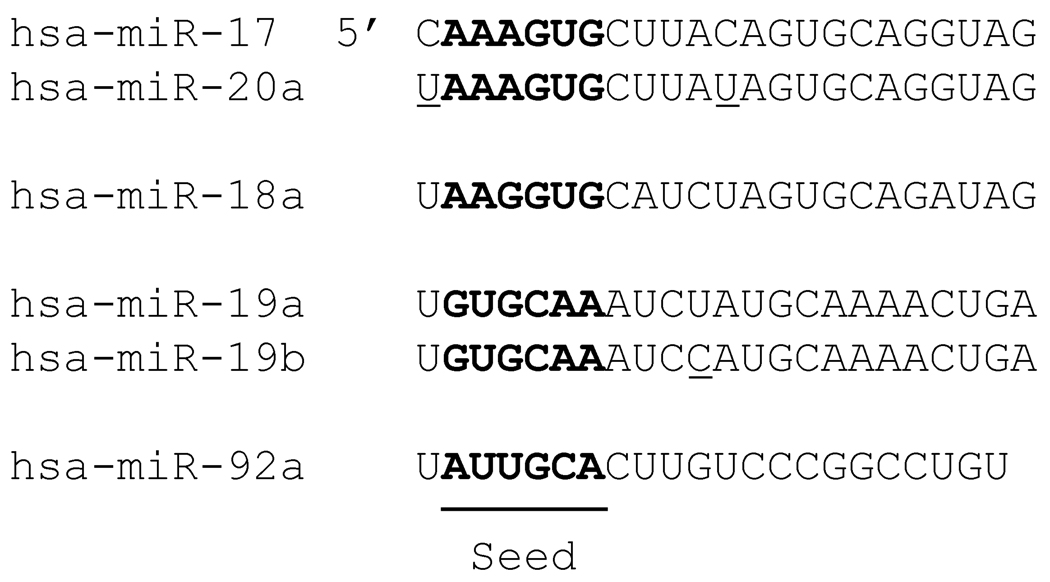Figure 1. MicroRNA Expression and Processing.
(A) MicroRNAs are expressed as primary transcripts and processed by the microprocessor in the nucleus to precursor microRNAs. For the TGF-β responsive mir-21 and mir-199a, interaction of SMAD proteins with the p68 helicase in the microprocessor increases processing to the precursor, facilitating expression via processing. The precursor is exported for subsequent cleavage by Dicer in the cytoplasm. The mature microRNA is loaded into the RISC complex and suppresses translation of target mRNAs. (B) The mature microRNA is 19–23 nucleotides in length, with the specificity-determining seed region (nucleotides 2–7) at the 5’ end. MicroRNA family members generally share an identical seed and differ at only a few positions overall (underlined). The mir-17–92 cluster is illustrated, demonstrating the seed (bold) as well as the high degree of similarity of family members (mir-17 and mir-20a). Note that the mir-18 sequence is similar to mir-17 and mir-20a but has a different seed sequence, indicating a different set of targets.


